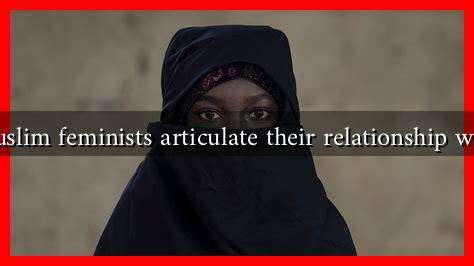-
Table of Contents
How Do Muslim Feminists Articulate Their Relationship with the Veil?
The veil, often symbolizing the intersection of faith, culture, and gender, has been a focal point of debate within and outside Muslim communities. For many Muslim feminists, the veil represents a complex relationship that intertwines personal choice, cultural identity, and political resistance. This article explores how Muslim feminists articulate their relationship with the veil, highlighting diverse perspectives and experiences.
The Veil as a Symbol of Empowerment
For some Muslim feminists, the veil is not merely a piece of clothing but a powerful symbol of empowerment and autonomy. They argue that wearing the veil can be a conscious choice that reflects their identity and beliefs. This perspective is often rooted in the idea of reclaiming agency over one’s body and choices.
- Personal Agency: Many Muslim women assert that choosing to wear the veil is an expression of their autonomy. They emphasize that the decision to don the hijab or other forms of veiling is deeply personal and should not be dictated by societal norms or external pressures.
- Cultural Identity: The veil can also serve as a marker of cultural identity. For Muslim feminists, wearing the veil can be a way to connect with their heritage and assert their presence in a multicultural society.
- Political Resistance: In some contexts, wearing the veil is seen as an act of defiance against Western imperialism and Islamophobia. Muslim feminists may view the veil as a way to challenge stereotypes and assert their rights in a global landscape that often marginalizes Muslim identities.
The Veil as a Site of Oppression
Conversely, some Muslim feminists critique the veil as a tool of oppression, particularly when it is imposed by patriarchal structures. They argue that the veil can be used to control women’s bodies and limit their freedom. This perspective highlights the need to differentiate between choice and coercion.
- Patriarchal Control: In certain contexts, the veil is mandated by societal or familial expectations, which can lead to feelings of entrapment. Muslim feminists argue that true empowerment comes from the ability to choose whether or not to wear the veil without fear of repercussions.
- Intersectionality: The experiences of Muslim women are not monolithic. Factors such as race, class, and nationality intersect with gender, influencing how women perceive the veil. For instance, Black Muslim women may face unique challenges related to both their race and their faith.
- Global Perspectives: The debate around the veil is not limited to one region or culture. In countries like France, where secularism is strictly enforced, the ban on the hijab in public schools has sparked significant backlash from Muslim feminists who view it as an infringement on personal freedoms.
Case Studies and Examples
Several prominent Muslim feminists have articulated their views on the veil through various platforms, contributing to a broader understanding of its implications.
- Fatema Mernissi: A Moroccan sociologist and feminist, Mernissi argued that the veil is often misinterpreted in Western discourse. She emphasized that it can be a source of empowerment rather than oppression, depending on the context in which it is worn.
- Asma Barlas: In her work, Barlas challenges the patriarchal interpretations of Islamic texts that are often used to justify the oppression of women. She advocates for a re-reading of the Quran that emphasizes equality and justice.
- Yasmin Mohamed: A Canadian activist, Mohamed has spoken out against both the forced wearing of the hijab and the stigmatization of those who choose to wear it. She emphasizes the importance of personal choice in the discourse surrounding the veil.
Conclusion: A Multifaceted Relationship
The relationship between Muslim feminists and the veil is complex and multifaceted. While some view it as a symbol of empowerment and identity, others critique it as a potential tool of oppression. The key takeaway is that the veil cannot be understood in isolation; it is deeply intertwined with issues of personal agency, cultural identity, and political resistance. As Muslim feminists continue to navigate these complexities, their voices contribute to a richer understanding of gender, faith, and identity in contemporary society.
For further reading on this topic, you can explore resources such as Muslim Feminism and various academic journals that focus on gender studies and Islamic feminism.


